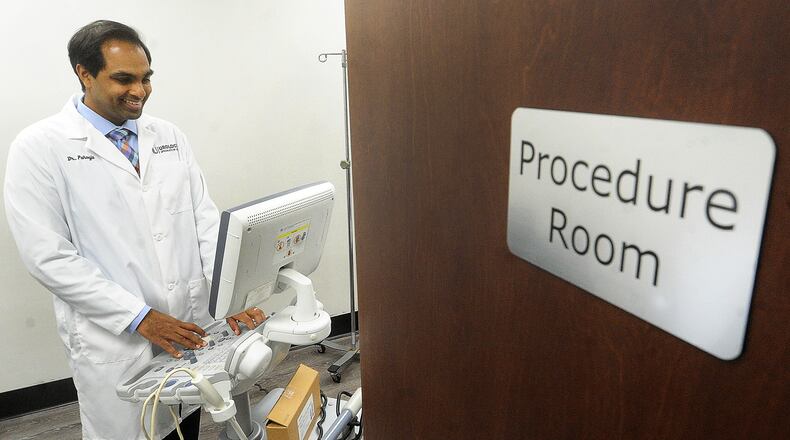“We’re seeing a rise in America and in the Dayton region,” said Pahouja.
The pain from kidney stones is caused by irritation or blockage.
“Kidney stone pain is very brutal,” said Kevin Baker, an advanced practice registered nurse with Premier Health Family Care of Vandalia.
Thirty years ago, kidney stones affected about 5% of the population, Pahouja said.
“That figure has more than doubled to about 11% of the population,” Pahouja said. This means about one in nine people on average are having kidney stones or have had them, he said.
The prevalence of kidney stones in the U.S. increased from 3.8% in the late 1970s to 8.8% in the late 2000s, the National Kidney Foundation said. The prevalence of kidney stones was 10% during 2013–2014. The risk of kidney stones is about 11% in men and 9% in women.
“To put that into perspective, that’s around the same figure now as diabetes in the U.S.,” Pahouja said.
Urologists are seeing a rise in kidney stones in younger individuals, he said.
The foods people consume and decreased water intake could be to blame for these upticks. Diet is a big contributor to kidney stone disease, Pahouja said.
“We may be seeing an increase in (kidney stone) patient visits to the ER probably just given food intake during the holidays,” Baker said.
Foods with high sodium levels, foods high in oxalates, and drinks with caffeine and/or sugar can be to blame. Staying hydrated is a key to preventing kidney stones, doctors say.
“Ensuring good water intake is going to dilute those minerals that form kidney stones, and that’s the biggest key in prevention,” Pahouja said. “Probably the most common cause is chronic dehydration.”
Pahouja recommended reducing intake of fried foods, processed foods and salty snacks.
“I always like to tell people everything in moderation because if we try to be too strict about this stuff, we’re never going to follow it,” Pahouja said.
For smaller kidney stones, there is medication to help a stone pass on its own.
For those pebble or golf ball-sized kidney stones, urologists can either use lasers to break up the stone or remove it through the back.
“Some of the stuff we can do nowadays include shocking the stone from outside of the body using a small camera and high-powered lasers to blast away the stone and then accessing the stone directly through the back,” Pahouja said.
After passing or removing of the kidney stones, doctors can do a lab analysis or metabolic testing to find out the makeup of the kidney stones to tailor a prevention plan. Preventative medications can also be used in the future.
“Ideally, if you’ve had one kidney stone, we never want to have that experience again,” Pahouja said.
More than half a million people go to emergency rooms for kidney stone problems, according to the National Kidney Foundation.
About the Author

